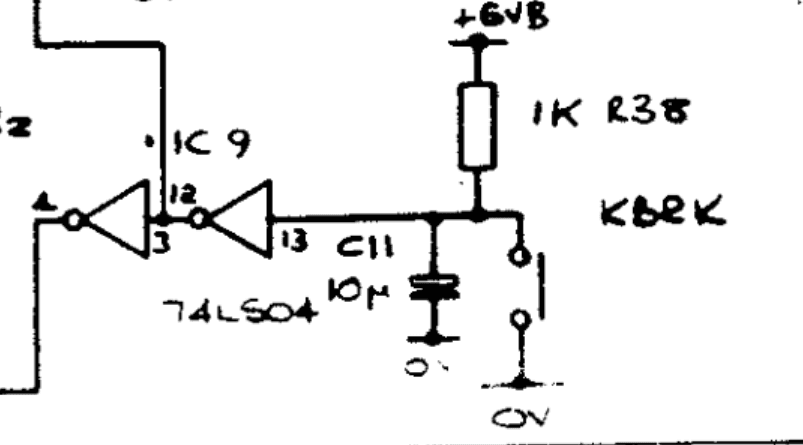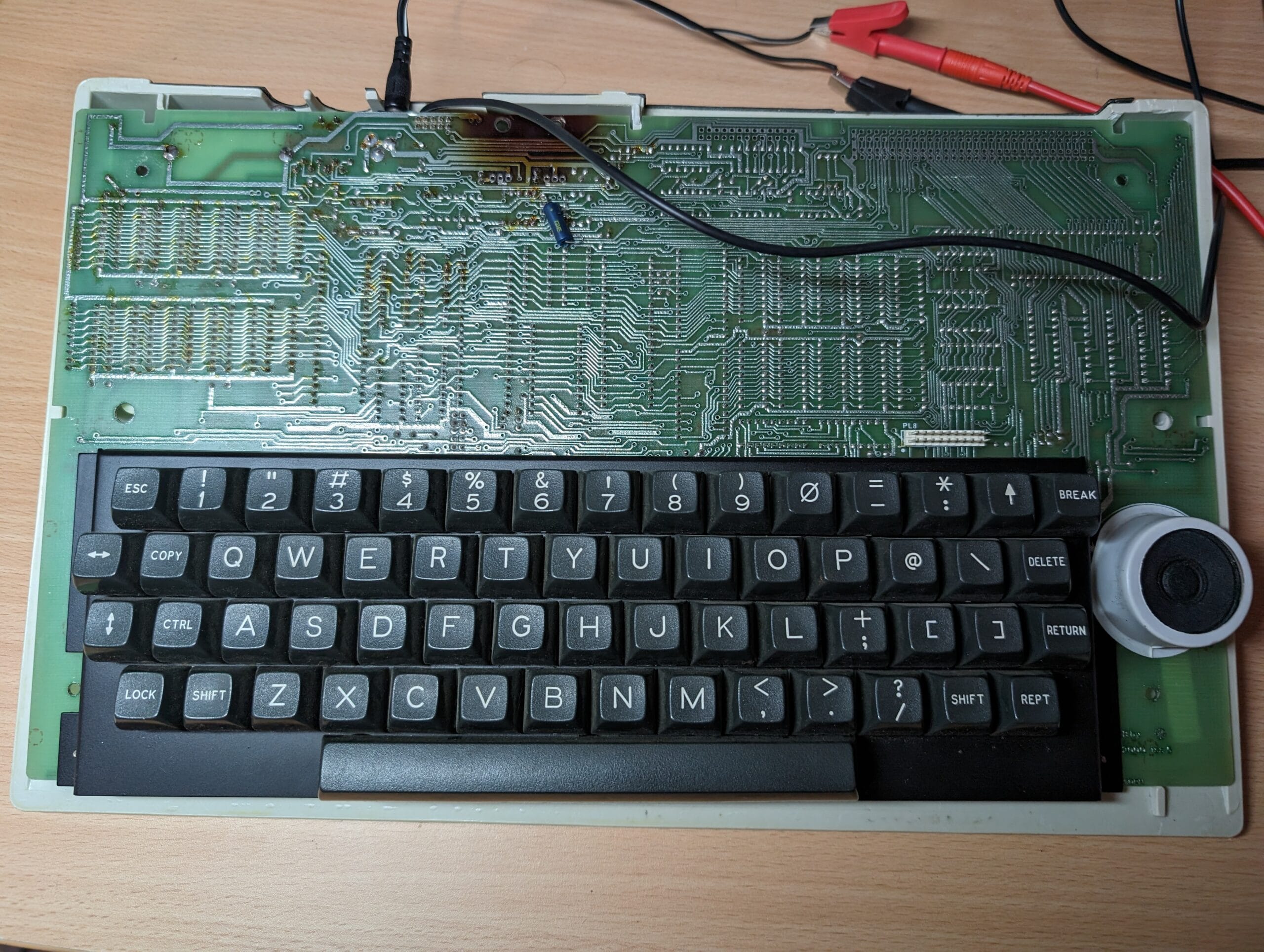In my previous post, I discussed the massive haul of Acorn related equipment I received, and one important piece in the collection was an Acorn Atom. Today I got to test if it worked!
Investigating

Looking at the date codes on the chips inside this Atom, it appears to have been manufactured at least in the second half of 1981. This tallies with the fact that this is an issue 5 motherboard, which was the last issue made. One of the main differences between 1-4 and 5 is that 5 uses different keyswitches. The ones in the issue 5 are a relative of the ones in many BBC Micro / Master machines, which I guess is why they feel familiar.


Opening Up
First of all, I need to open up to look inside. Luckily (for now) the screws that hold together the top and bottom parts of the casing are missing. So it is just a case of removing the four screws that hold the motherboard to the top part of the case. Yes, in the Atom, the motherboard is screwed to the top case, not the bottom.

Now we have exposed the bottom side of the PCB as well, and we can see something a bit caramelised at the top.

Deregulation
This caramelisation is the bottom of the voltage regulators. As standard, an Acorn Atom comes with an 8v power supply. This feeds two 5v regulators which power various parts of the board. I saw a few comments mentioning that they get pretty hot, but it appears they get hot enough to damage the PCB substrate!
Fortunately, whoever designed the PCB appears to have thought about this.

You can see here IC53 and IC53, these are the regulators. Near them are LK6 and LK7, they are unpopulated link wires. If we were to remove the regulators and instead populate the two LKs, that now means the PSU supplies 5v to the entire board from the power socket. We just need to make sure that a 5v PSU is used from now on.
A combination of a screwdriver to remove the heatsink and my Hakko FR410 to desolder the through-hole quickly removed the two regulators. I then used some short pieces of wire to populate the two LKs.

Testing
To be able to test this machine, I needed two things:
- A way to power it
- A way to get the video output
The only video port on the Atom was a TV modulator. Bizarrely, whilst I do have TVs capable of analogue RF, I couldn’t find any suitable cables in my workshop. But there is another way!
In the diagram below you can see the pinout of a 10 pin header on the motherboard. Pins 9 & 10 are intended for a composite output.

Now, this is only going to give a black and white output, but this is fine for testing. I found an old audio cable in my workshop, cut the cable and put a two pin dupont on it to form the video cable. It is a bit hacky, but it will do for now.

As for powering the machine, whilst I have 5v power supplies, I don’t yet have one with the correct connector. Someone had previously cut the output plug off the original PSU, I therefore stripped this back a bit to expose fresh copper and used my bench power supply to hook it up. The connector is centre-positive (trust me, I triple checked everything before even attempting to power it).
The end result looked a little like this.

I then flipped it over and rested it in the bottom shell so that I could access the keyboard.

Crunch time… I hit the button to activate the bench PSU output and…

Erm… OK, well, that was output at least. The machine was drawing 1.7A at 5v from the bench PSU, so I can see why those regulators got a bit toasty.
I hit the “Break” key which is the soft reboot key in most Acorn gear, I was then greeted to.

To quote Adrian’s Digital Basement: “It Frigging Works!”
Reset issue
The initial jumbled characters at power on is an indication that the power on reset circuit is not working correctly. The circuit is pretty simple, it is basically an R/C timing circuit that also triggers when the Break key is pressed.

Judging by this forum thread, the R/C circuit values are not high enough to hold the reset long enough. But when you hit the Break key, your physical action of pressing and releasing is long enough.
It is likely I will replace these with higher values, I happen to have lots of the required axial capacitors, as they are used a lot in other Acorn models.
Next steps
There are several things I’m going to be doing, so I’ll list them out here:
- Reset fix. I intend to make the power on reset circuit more reliable.
- An RGBtoHDMI. The RGBtoHDMI project was actually originally created for the Acorn Atom. David Banks, the creator of the project, has sent me required PCBs for the Atom. I just need to assemble them.
- Cassette interface. I have bought a cassette player that has both USB and audio interfaces so that I can use the tapes that came with it, and more importantly, back them up. After giving technical details to the fine people at CoolNovolties, they have created a new Acorn Atom tape interface cable! I have one on the way.
- PSU. I need to have a more permanent power solution.
- Cleaning. This machine is pretty dirty, let’s see if we can bring the original Acorn casing colour back.
This will be a fun journey, partly because I’m not familiar with the Atom software at all, beyond what I know from my BBC Micro experience. I’ll share what I find here.


Leave a Reply